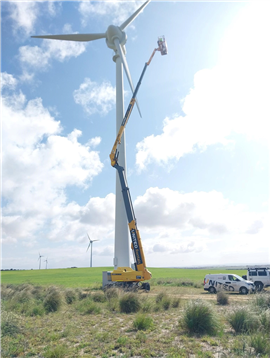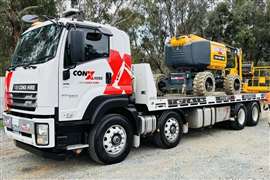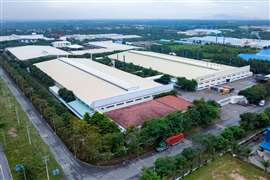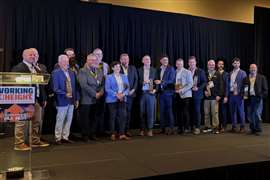Read this article in Français Deutsch Italiano Português Español
What makes the Australian access market tick?
26 February 2024
Access International spoke to two rental companies, Coates and United Forklift & Access Solutions, to find out what moves the needle for the Australian market and its MEWP operators.
Coates, which is part of Seven Group Holdings, has a fleet value pushing AUS$2 billion, across 23 product lines, making it, as Dan Goodfellow, group manager of products & fleet trading explains, “Australia’s largest rental company by a long way.”
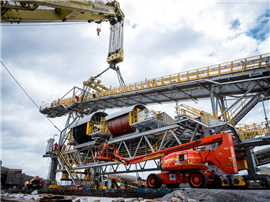 Coates equipment at Port Kembla, a suburb of Wollongong, New South Wales.
Coates equipment at Port Kembla, a suburb of Wollongong, New South Wales.
Access equipment is Coates’ biggest single product category running to 8,000 units, which is split between scissor lifts, making up around 50% of the fleet, followed by boom lifts in the main, including a number of ultra booms, alongside a range of trailer mounted platforms.
Although trailer mounts are not a major part of the fleet in numbers, they have become an established offering and are found in all the company’s depots, as an alternative to the compact truck mounts commonly found in Europe.
“Towing behind a car is a lot more economical for us in Australia than having a truck mounted boom.”
Dan Goodfellow, adds, “They are much more expensive, and we don’t technically need the narrow make up of a truck mount like you would in Europe. Plus the footprint of Australia, which you could overlay across all of Europe, means we need to travel large distances and still be mobile, so the trailer mounted boom suits our country.
“We have a number of towable machines for the trade space that comes into our depots, so it’s a general hire item for us.”
That trade segment is a small but vital part of the business in comparison to the company’s top-tier customers involved in large-scale developments or the likes of mining, which is another major source of business for Coates.
Trading tiers
“We’ve got our branches that do the general trade and mid-tier construction walk-in to get a jackhammer, a chainsaw or take a trailer mounted boom. Then you have the top-tier large projects that might take 100 scissors in one go,” says Goodfellow.
It’s the top-tier segment that amounts to around 85% of Coates’ business.
“We intentionally held our fleet size during Covid by holding on to some of our investments but also the supply chain of our suppliers was seriously impacted, so some of our product categories like access did start to decline.
“We traditionally hold around $400 million of fleet size in access but this did decline by 10-15% during Covid as we removed old fleet past 10 years but had long lead times of replacement coming in from our suppliers. We have since got back to our traditional fleet size in Access after purchasing over $100 million over the last two years, alongside some acquisitions to top us up as well.”
Supply challenges
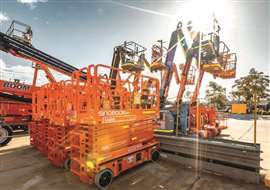 Scissors at one of Coates’ yards.
Scissors at one of Coates’ yards.
One of the challenges that still lingers from Covid is the supply chain, which has been a constant, if improving theme, since the pandemic.
“It hit us really hard here in Australia in some product spaces where we’re only getting machines now that we ordered in 2021 or 2022. Not just for access but in a number of different product categories.
“There was a two-year lead time to get big equipment into Australia. So, it made it really hard to manage your fleet size in some product areas.”
The long lead times were exacerbated by the fluctuating cost of materials.
“We had a number of suppliers, again, not just access suppliers, that came looking to increase prices during Covid, after orders had been placed.”
Goodfellow adds, “So, we had some serious robust negotiations discussing price, lead times, freight costs and everything in between. But now as we push for more growth with investment we can certainly apply that pressure back onto the suppliers to ensure they reduce costs.”
In some cases prices have fallen back to less excessive amounts, in raw materials and freight especially. “Our containerized equipment coming into Australia probably went four times higher than what we would have paid pre-Covid - we were up to $15,000 - $20,000 a container when it used to cost us four or five.”
Goodfellow adds, “For our full year 2023 to 2024, in some of our product categories, prices have actually come back, and it’s really good to see that they haven’t maintained their unreasonably high pricing.
Wider options
With more equipment options from a growing number of access manufacturers in the market, will Coates be taking advantage of the wider choice?
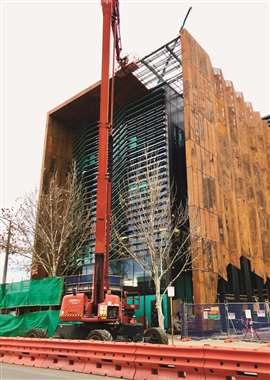 Coates on construction duties.
Coates on construction duties.
“We are now seeing some of the suppliers in China on an equal quality level to those traditional suppliers from Europe and North America. They still need some development in the service infrastructure in Australia to support the product, but this is definitely improving,” comments Goodfellow.
“Pre-Covid we’d already started looking and did a fair bit of investigation into some of the big access suppliers in China. It was already in my plan to try and diversify our supply.
“My strategy was to try and get at least a major American supplier, one European supplier, one Chinese supplier. This would help Coates mitigate risk of supply by having options.”
There is growth in the market with infrastructure jobs in the pipeline across Australia, however, labor market constraints continue to be a challenge for the industry.
“Over the next three years, what will probably see some slow growth as much as anything is the fact that the pipeline of construction work continues to exceed the availability of skilled and unskilled labour. Across the industry, we don’t have enough technicians and we don’t have enough engineers to actually do the jobs themselves.
“So, we feel some of those big construction jobs will linger longer as industry capacity constraints continue to weigh on activity. Rather than those big projects cutting off in 2026, we’re probably looking at 2029, which might affect the expected peak.”
Taking all these factors into consideration, Coates is already buying for 2025. “All of our big categories have already had approval through our board and are on order with the manufacturers.
“Access, for example, it’s probably another 1,000 units.”
Varied environment
If there is one obvious difficulty for a national business in Australia, it’s the vastness of the country and the challenging terrain that makes up much of it.
Coates has changed its structure in recent times to a hub and spoke model that relies on a central location, the hub, with a number of satellite branches supporting that hub.
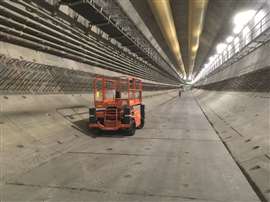 The West Gate Tunnel Project creates a new river crossing in Melbourne to alleviate traffic.
The West Gate Tunnel Project creates a new river crossing in Melbourne to alleviate traffic.
“We run large hubs in our capital cities that now do a majority of our major repairs of equipment and take the calls via our Platinum call centers.
“Elsewhere, our branches across the country have a branch manager, customer service staff, general mechanic, yardie, and a loader and it’s a lot more efficient. The teams can just focus on great customer service and just making it happen.”
As previously mentioned, the remote location of some of Coates’ major work sites, such as the mine in Roxby Downs in South Australia, one of the biggest mining towns in the world, calls for a complementary approach. In this case the Roxby Downs mining site has a Coates branch all of its own.
Harsh conditions in Australia can range from cyclones and flood to devastating fires and drought and this type of emergency planning and provision is an area that Coates has always provided.
“These situations do provide challenges for consistency and planning. The emergency side of things is one part of the business we’re keen to develop further as part of our end-to-end solutions offering.”
Operators of lifting equipment in Australia are subject to a major inspection at 10 years of age. The AS/NZ 2550.9 inspections standard means a piece of equipment, no matter of its condition, must undergo a major strip down of its lifting components and crack testing of all load bearing structures. It means the cost of this refurb, especially on smaller MEWPs, would be too high to be practical and equipment is therefore sold to the used market outside the country.
Younger fleet
“This means, we have a hard stop of 10 years on our equipment,” says Goodfellow, “It makes it a little bit easier to plan your demands because you know when things are going to be replaced.”
On the other hand, this ‘hard stop’ means you can’t eek out equipment that is not used much beyond the 10 years. While the 10-year deadline looms large, the average age of Coates’ MEWP fleet has been dropping.
“We’ve probably gone from an eight-year average life on our access fleet down to about six in the last year and a half. It’s been an aggressive approach to just bring that average age down a little bit.”
It also recognizes the benefits of new equipment such as electric and hybrid which match modern sustainability policies and are becoming increasingly available as manufacturers expand their ranges.
“We are on a sustainability journey as a company. We launched our first Sustainability Strategy in 2021, followed by our Greener Choices range in 2022, across a number of product categories.
“While we don’t currently have the same emission or environmental legislation in Europe, it is coming at us very quickly. Currently our top tier customers drive a large amount of demand for sustainable practices and products as they have similar emission reduction targets to Coates around significantly reducing emissions by 2030 and 2040.”
United Force
United Forklift & Access Solutions, has an aerial platform fleet of around 3000 units, which, says Doug Rawlings, the company’s state manager, will grow as United continues to expand on the east coast. The market rebounded very strongly from the Covid pandemic and has been notably positive in the mining and construction industries, says Rawlings. “There has also been a ‘catch-up’ of deliveries of new equipment with freeing up of stock availability from manufacturers and transport and logistics capability in delivering to Australia.” Despite this there are signs of a slowdown. Rawlings adds, “The rental market has been strong for aerial platforms since the end of Covid with most businesses running at reasonably high utilisation. However, “There would appear to be a slight slowing in the market now and we are expecting to see more of that through 2024.” As an indicator of United’s long-term confidence in the MEWP, Rawlings says its capex should reach around AU$45 million over the next 12 months, that being AU$15m replacement and AU$30m growth. Servicing Australia
On the question of investment in equipment from China-based manufacturers, Rawlings’ answer is clear. “United are dealing with their long-term partners only where safety, quality, conformity are the focus.” 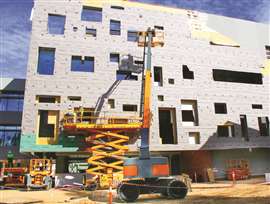 United Forklift & Access Solutions carries out construction work. United Forklift & Access Solutions carries out construction work.
While overall prospects are good, there are some changes to be found in the market. “United’s biggest challenge is servicing regional areas throughout Australia. With large labour shortages already in metro areas it is increasingly difficult to service them and rely on contractors. United are working on how we expand into these areas over the coming years.” On the subject of specific opportunites, Rawlings sees new ‘green’ equipment ticking the box. “United are proud of the long-term partnership we have with our key suppliers and the innovation they are providing around safety and electrification. We have great opportunities to take these products to our local customers and further expand our presence in the East Coast and in various regional areas.” While there is some level of consolation, with smaller business owners retiring from the market, Rawlings doesn’t see a massive change in the landscape. “There is still a lot of diversity throughout Australia with many competitors and we don’t see this changing too much in the short-term. 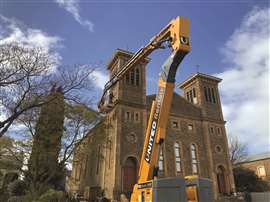 United carries out maintenance work on an historic building. United carries out maintenance work on an historic building.
United has a very clear expansion plan over the next five years by growing its presence in the East Coast and various regional areas throughout Australia, as well as focusing on innovation. “We have some excellent partners who are well advanced in the electrification space with clear plans to further convert their product offering over the coming years including the RT access product offering. “We continue to move with our suppliers in this offering as the product becomes available. Our focus is to also ensure battery technology is developed in an environmentally sustainable way with clear recycling programmes.” |
Brought To You By
|
STAY CONNECTED



Receive the information you need when you need it through our world-leading magazines, newsletters and daily briefings.
CONNECT WITH THE TEAM










